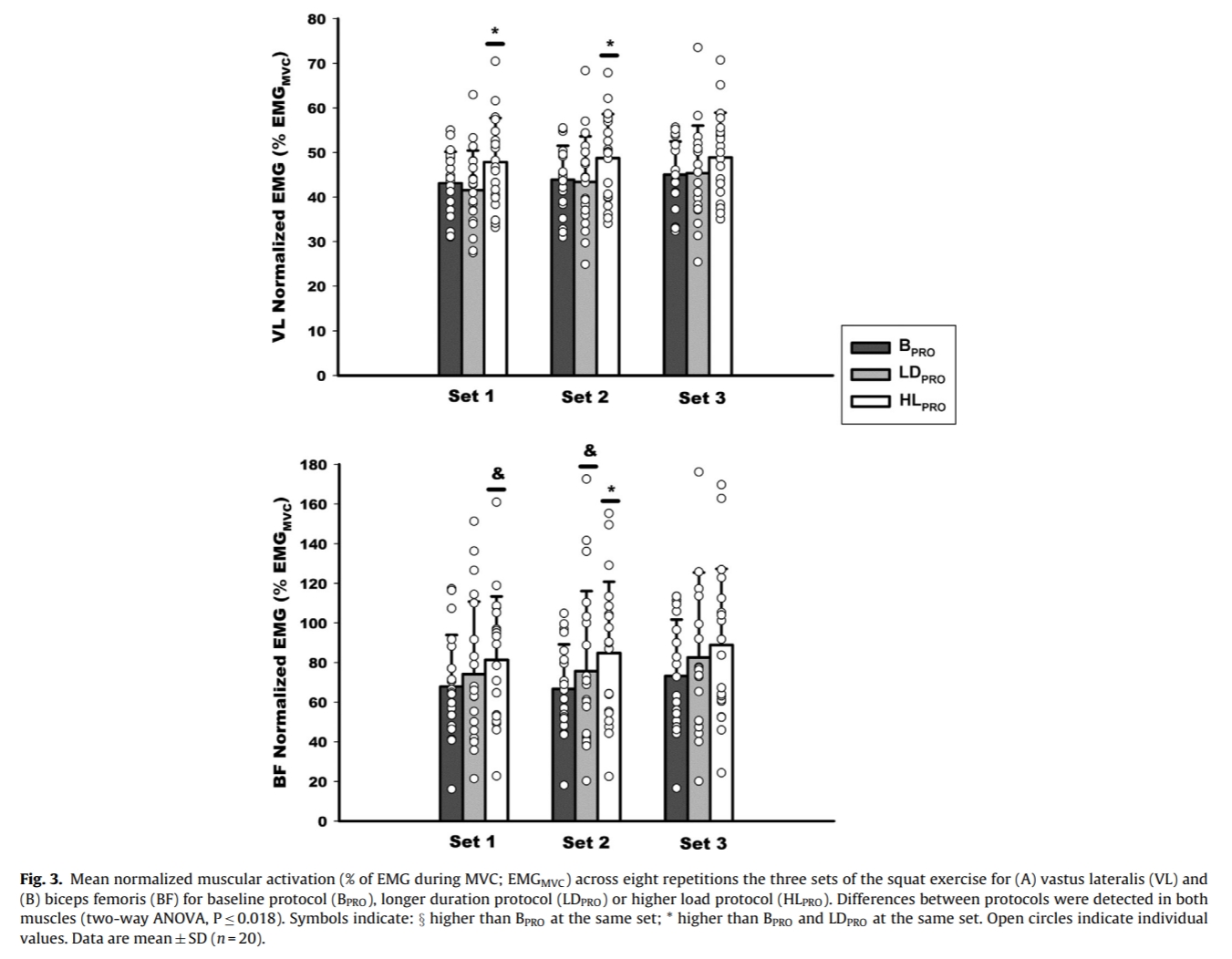Acute physiological responses with varying load or time under tension during a squat exercise: A randomized cross-over design
Erica F.F.Corradi Journal of Science and Medicine in Sport Volume 24, Issue 2, February 2021, Pages 171-176
Objectives
Despite advancements in resistance training (RT) methods, the acute metabolic and neuromuscular responses to time under tension (TUT) and load remains poorly understood. The aim of the present study was to investigate how TUT or resistance load impact muscular activation and blood lactate during an RT session.
Design
A randomized cross-over design.
Methods
Participants performed a squat exercise in three different conditions: baseline protocol (BPRO; three sets of eight repetitions with four second repetitions at 60% of 1RM) long duration protocol (LDPRO: six second repetitions) and high load protocol (HLPRO: 70% 1RM).
Results
Muscular activation of the vastus lateralis and biceps femoris, and blood lactate were assessed. Blood lactate was ∼19% and ∼26% higher after set one and three in LDPRO compared to BPRO (P ≤ 0.011) and ∼17% higher for LDPRO compared to HLPRO (P = 0.002). Additionally, blood lactate was ∼17% higher for HLPRO compared to BPRO after the third set of exercise (P = 0.003). Vastus lateralis activation was ∼10% higher for HLPRO compared to BPRO and LDPRO for sets one and two. Biceps femoris activation was ∼17% higher for HLPRO compared to BPRO for set one (P = 0.023) while for set two HLPRO was greater than BPRO and LDPRO (∼19% and ∼14%, respectively; P ≤ 0.007).
Conclusions
Squatting with higher TUT caused a greater impact on the metabolic responses than lower TUT or higher loads, whereas an increase in training load resulted in greater muscle activation than higher TUT or lower training load.














